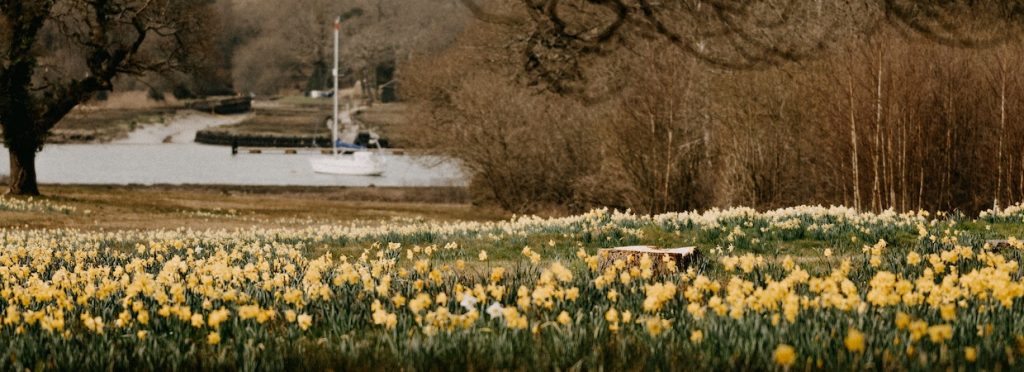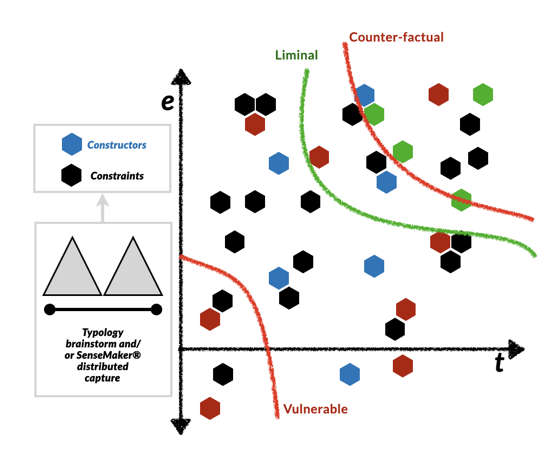Menu

 It’s been my practice for some years to use St David’s Day as a chance to update the latest version of Cynefin. Last year was no exception but in the second of two posts I indicated that 2023 would see this extend to other frameworks within the Cynefin ecosystem. The reason was that with the resolution of the central domain of Cynefin as aporetic that framework has reached a natural point of stability. So this year I am going to focus on the Estuarine framework which has taken off following my original post. I issued one update to that post and subsequent practice has further refined and extended the work.
It’s been my practice for some years to use St David’s Day as a chance to update the latest version of Cynefin. Last year was no exception but in the second of two posts I indicated that 2023 would see this extend to other frameworks within the Cynefin ecosystem. The reason was that with the resolution of the central domain of Cynefin as aporetic that framework has reached a natural point of stability. So this year I am going to focus on the Estuarine framework which has taken off following my original post. I issued one update to that post and subsequent practice has further refined and extended the work.
It’s been a fascinating process. It normally takes me around 5-7 years to get the theory to the point where I can create a method set, and then around 3-4 years before the whole thing can go out unsupervised. Here the theory stage was similar but it’s been months not years for the framework itself. I’ve just got back from a tour of Singapore, Australia and New Zealand where I can the process five times, building on a lot of activity before I went and it’s still evolving. This afternoon I was working with the design team in our Bristol Office to create a Hexi kit around the method and next week we’ll be building the software that will allow the generation of the energy grid shown at the start of this post.
This blog post is by way of consolidation and the beginnings of a formal method sheet so I’m going to organise it into sections with headings to make things (hopefully) clearer. It’s probably at the level where it can move over to the wiki as well. That is important as several people picked up from my original blog and just ran the process – which is good news – and the wiki provides a place to share that practice. I’ve linked to the previous two articles but I am writing this from scratch, that is to say, without assuming knowledge of those although I may point out some key differences. Remember this is in very active development at the moment, and last week drove me back to physics textbooks I haven’t read since the 1970s. The framework is theory-based, but as I develop the practice I’m starting to remember more and interpret more, knowledge which came into play tacitly not explicitly in the original posts.
In today’s post, after defining the overall objective of the framework and associated methods, I am simply going to walk through the current process. In the second and final post tomorrow I want to be more reflective (for which you might read self-indulgent) in exploring the underlying metaphor and the links to constructor theory and anthropology-complexity in general.
I’m still working on the best way to state this, so take this as a provisional – it needs simplification, If you just want to understand the approach skip it and come back here later, to the degree it assumes some familiarity with the process
One of the key aspects of complexity-based approaches to strategy is that we need to focus on the evolutionary possibilities of the present; starting multiple exploratory journeys with a sense of direction, open to novelty and course correction as we go. To add to that, the speed of change in a complex system, in response to minor perturbation means that we need real-time responsiveness to weak signals, and ideally anticipatory alerts for when the plausibility of such change requires attention. That means we have to find ways to combine strategy with tactics in the same framework and distribute significant decision-making into the field as we don’t have time for traditional command and control. We also have limited energy budgets and ideally, we want the energy cost of virtue to be less than that of sin to use a phrase I coined when I started on this journey. There is also a significant danger if we focus too much on the future, which we can’t know, in that we lose the opportunity to influence it through small changes in the present (and near-term future) where we can have a high degree of certainty. One of the Greek philosophers, or maybe Seneca said that in a more quotable quote but I can’t find it at the moment,
The other problem with focusing on the future is that we can blind ourselves to emergent possibilities. There is a teleological aspect to human sense-making, something that needs further exploration but I will just leave that hanging for the moment. So the whole point of the framework is to map what is possible and what is not possible to change, or in terms of physics what transformations are possible and impossible. An important related issue is to try and remove politics from situational assessment and strategy determination. If you focus on futures and outcomes then you can’t avoid issues of power and politics, in part because you are working at a macro level. If we switch to a more finely-grained level of change (i) we can afford more errors, and (ii) consensus is easier to obtain. I’ll expand on that tomorrow based on recent experiences using the framework. But in summary the more objective our assessment of the situation and its proximate potential the more resilient our strategy and the wider the engagement in its execution.
The base process now has five stages and can be run in a workshop. We are currently working on automating stages 1&2 and in part 3 using SenseMaker®. That allows wider engagement, opens up the possibility of real-time mapping and critically allows to capture of additional data based on impact and sorting to represent the map based on different criteria. There is still more work to make this even simpler by the way but that takes time if you don’t want to compromise.
This picks up on the typology of constraints in the EU Field Guide and extends that to include constructors. A complex system is modulated and mapping the modulators and the degree of control or influence we have over them is critical to managing complexity. Constraints in the main connect things or contain them and therefore act as modulators, a variation on that is they can govern or enable agent-based interactions within the system. By focusing people on identifying modulators we prevent them from jumping to conclusions about what should happen. Constraint mapping works with three typologies:
In a workshop, we arrange the first as a line and the second and third as points of two triangles. That is designed to stop people from classifying things into types (that would be a taxonomy). The purpose of a typology is to stimulate people to think more broadly and in a workshop, people move around the typologies generating material onto hexi cards (or ordinary post-it notes). That has been around since when we started with the process and is described in the Field Guide – Estuarine mapping is an extension of that.
But a problem with talking about constraints is that people see them more as restraints than as enablers and there is a limit to how much effort anyone can put into changing that. Also, the idea of constructors is an interesting one – it is something in the system that performs an act that results in a transition and can do it again and again. In constructor theory it doesn’t change in the act of construction, I’ve modified that to say it can but will have continuity of identity over time. Ritual is a good example and I normally use an operating theatre where the act of scrubbing up doesn’t just have a hygiene function it also triggers an identity shift from person to the role. A process is also a constructor and so on.
So allowing people to use both constraints and constructors improves things and, for followers of earlier versions, it gets rid of the rather clumsy secondary classification at stage two. Virtual capture allows more flexibility in gathering material. The more groups involved, the more material you get and the more value it has. We’ve seen the typology increase significantly the volume of material generated and there is little conflict involved at this level or granularity of capture.
So now you have a lot of hexi items with constraints and constructors identified (blue and black on the picture for red see later). You then get people to map them onto the energy/time grid shown above. In a recent variation (caused by a pen slipping while running the exercise in Auckland) I ended up with in effect a negative energy space which proved useful so it’s now there as a feature. ‘Energy’ here is used as a proxy of attention, money, resources etc. and there are no absolute positions only relative positions.
As people do this if there is any disagreement about the position you encourage people to break the item down to the point where there is agreement. More finely-grained material has more value at the point
Again if we do this using the software then we can provide an initial placing, and show placing from different perspectives but ultimately the grid needs to be negotiated and that is best done in a workshop but we can do it virtually
Now life gets interesting, we get people to create three boundaries. Horizontal facilitation works better for this by the way and in the Hexi kits we provide coloured and braided rope to make this easy. The three are:
Negotiation of these boundaries should not be rushed and again people start to reduce the granularity again to reach an agreement as to which side of the boundary they should be placed.
What we now have is a mapping of what we can actually change not an idealistic statement of what we might like to achieve.
As a result of that, we end up with different types of activities for the boundaries – and I am currently designing forms for each which will be a part of the kit.
Then that leaves us with everything in the middle and for that, we have two action types (I suspect this will be three to five shortly) namely
One of the additional types may be a marker for distributed decision-making, but I am simply flagging that for the moment more in a future post.
I now have a whole bunch of forms with very specific actions, so I map them onto Cynefin and cluster them. If complex then parallel safe-to-fail probes and so on. Rather than some grand strategy I now have a whole bunch of things I can go and do tomorrow that will change the dispositional state in such a way as to facilitate by the desired direction of travel. More on that tomorrow.
The opening photograph of a field of daffodils on the banks of an Estuary (is cropped from an original by Annie Spratt on Unsplash
Cognitive Edge Ltd. & Cognitive Edge Pte. trading as The Cynefin Company and The Cynefin Centre.
© COPYRIGHT 2024

Its been just over a week since I wrote my post on meta-muggleism, the title ...
In yesterday’s post, I provided a basic update on where Estuarine mapping is in terms ...